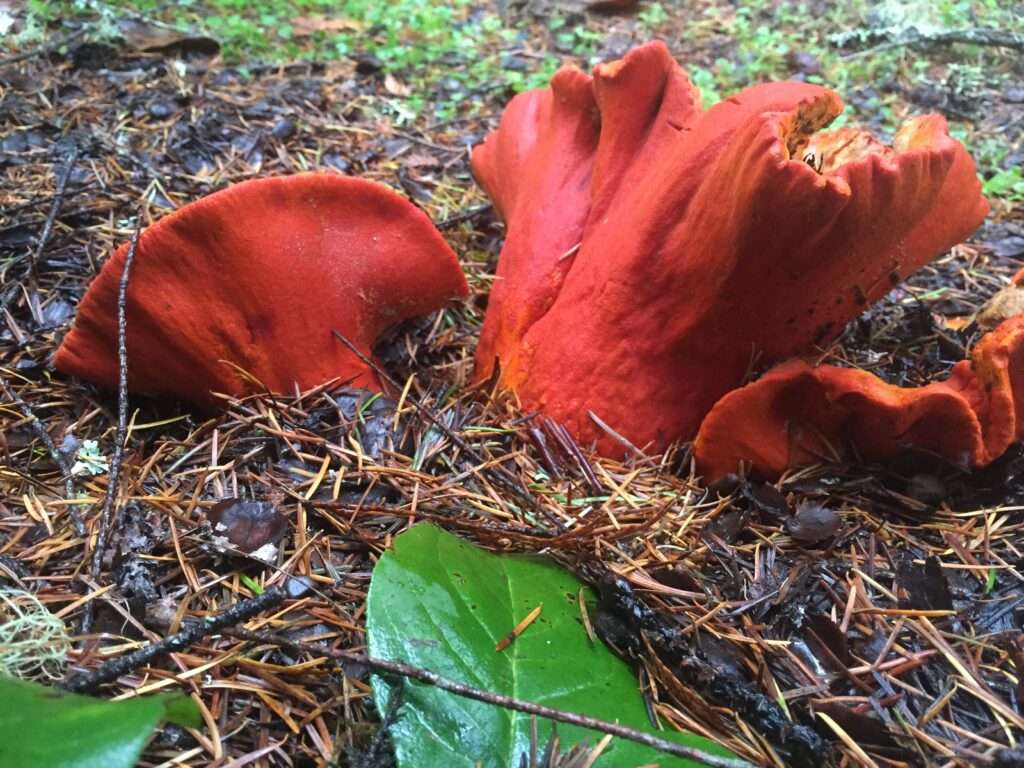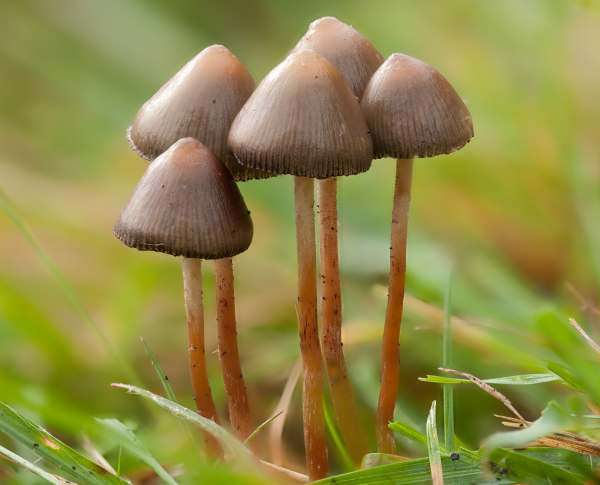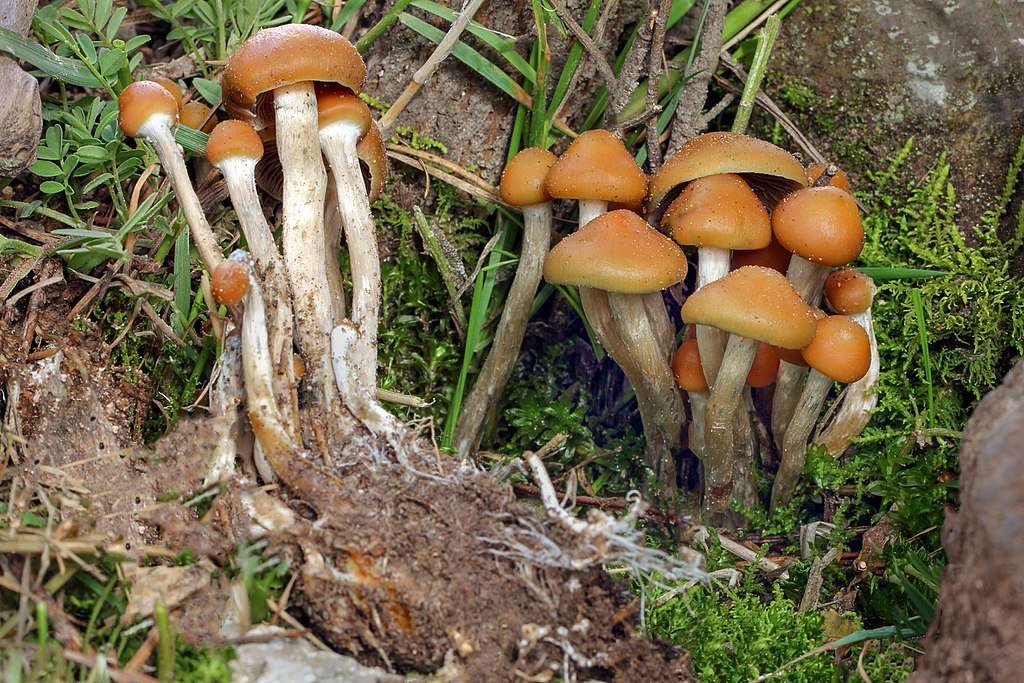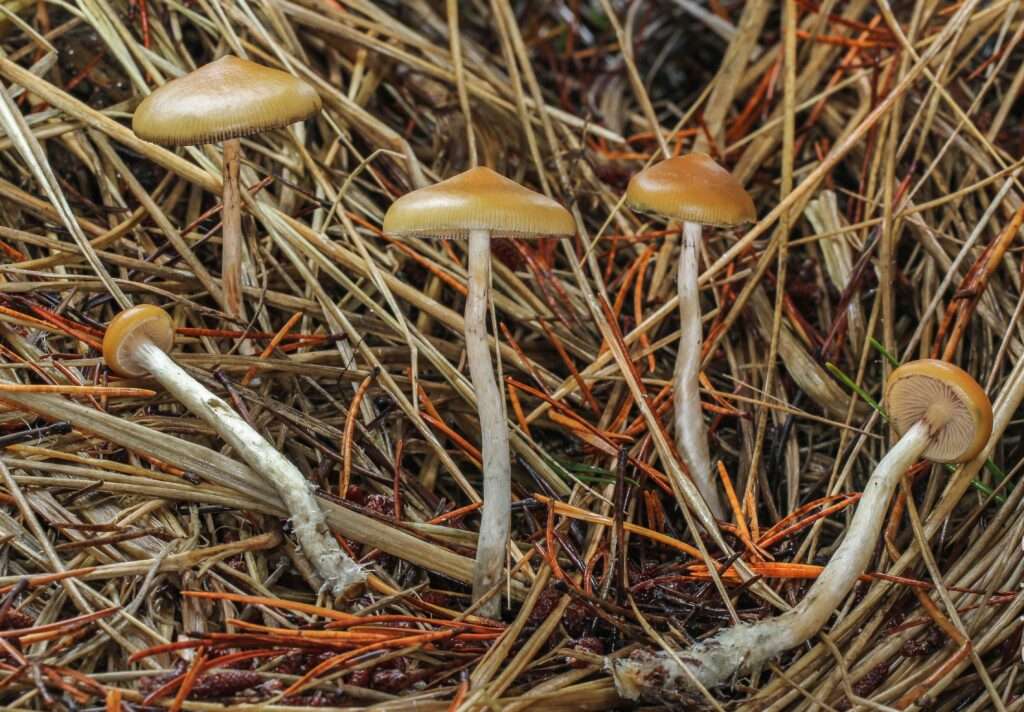
Scientific name
Hypomyces lactifluorum
Description
The lobster mushroom, despite its name and look, is not a real mushroom species. Parasitic Hypomyces lactifluorum infects wild mushrooms, the lactarius and russula mushrooms, to produce lobster mushrooms. The parasite covers the wild mushrooms, turning them crimson, strengthening the flesh, and imparting a robust meatiness to the fungi that would not have otherwise been there. When cooked, the lumpy-shaped mushrooms take on overtones of seafood, particularly lobster.
Lobster mushrooms are small, sturdy, and orange-red, becoming purple as they age. Their body is tight and solitary, with no distinction between cap, stem, gills, or base. The top cap is commonly semi-cup-shaped or concave with wavy edges. They frequently pick up some dirt when they emerge out of the earth and may need to be cleaned.

Habitat
Lobster mushrooms may be found in woodlands and forests all around the United States. They are most common under hemlock trees and emerge in October or September. They can grow in singles, pairs, or clusters. Lobsters can only be found on the jungle floor, not on trees, stumps, or timber. They don’t grow to be extremely tall. They are typically smaller than their original host and frequently do not emerge completely from the leaf litter.
Uses/Importance
Lobster mushrooms are finest when sautéed, braised, or baked. Although lobster mushrooms may be consumed raw. Aside from being a tasty fungus, the lobster mushroom is also a medicinal herb.
Lobster mushroom includes vitamin D, which assists in the absorption of minerals such as phosphorus and calcium. Vitamin D can also aid in immune functions, which can speed up the pace at which the system builds resistance to infections and illnesses. Lobster mushrooms contain zinc, which is beneficial for reducing inflammatory responses. It has a substantial quantity of fiber, therefore it may be taken to promote smooth digestion and prevent constipation.
The outermost red covering of the Lobster mushroom, as well as the other parts, may be used to dye. The greatest color is produced by old mushrooms which are deeper in color, distorted, mushy, and starting to degrade.
Table





